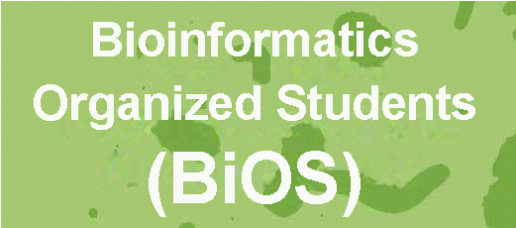Fall 2022 Student Seminars
December 14
Muzamil Khan
Advisor: Stefano Monti
Title: Exploring the cellular heterogeneity of carcinogen-induced oral tumors in mice via targeted therapy
Abstract:
Head and neck cancer is the 8th most common cancer in the United States, of which oral cancers (OC) arising in the oral cavity, such as the tongue, esophagus, etc., are the most prevalent. OC can be caused by one of two factors: infection with the human papillomavirus (HPV), also known as HPV+, that drives them to malignancy, or HPV- OCs. Because of their complex mechanisms, such as tumor heterogeneity and plasticity, the latter are difficult to treat. Treatment of HPV- OCs is limited, with only a handful of drug therapies available for certain subtypes of OCs. Small molecule inhibitors are gaining popularity due to their effectiveness in reducing tumor growth via epigenetic transformation. One such drug, E7386, developed by Eisai Pharmaceuticals, targets the Wnt/b-cat/CBP complex, blocking cellular proliferation and aggressive cancer traits. In this study, we are treating 4-NQO carcinogen-induced oral tumors in mice with E7386 and studying the cellular heterogeneity using single-cell RNA sequencing. Cellular compartments indicative of tumors, such as the epithelium and their microenvironment (Immune, stroma, and so on), are annotated and stratified across treatment groups as healthy, tumor-only, and treatment with E7386 with two different concentrations (25mg/kg and 50 mg/kg). Our initial analysis so far on the epithelial and immune compartments shows that there are cellular groups that change upon treatment to E7386 and become control-like. Interactions between these compartments were also analyzed, showing that ligand-receptor pairs are significantly enriched for tumor-promoting pathways. Our collective analysis reveals cellular sub-groups indicative of cancer programs are changing in response to E7386 treatment.
November 30
Devlin Moyer
Advisor: Juan Fuxman Bass & Daniel Segrè
Title: Using Expression Data To Make Context-Specific Metabolic Models
Abstract:
Dysregulated metabolism has been recognized as one of the hallmarks of cancer. Relatedly, many chemotherapies have been designed to target the unique metabolic requirements of cancer cells. However, there is extensive heterogeneity in the response to treatment amongst cancer patients and even between patients with the same type of cancer. Developing a deeper understanding of the metabolic disruptions in tumors in a patient-specific manner can provide insight into this heterogeneity and pave the way for the development of personalized therapeutics. Direct measurement of metabolic fluxes using metabolomics and isotope tracing is expensive and time consuming and thus challenging to apply to large cohorts of patients. I will circumvent this limitation by using Genome-Scale Metabolic Models (GSMMs) — a mathematical framework for predicting metabolic fluxes in a given metabolic network — and readily available cancer genomic and transcriptomics datasets to simulate metabolic disruptions in cancer cell lines and patients. These models could be used to group patients based on simulated metabolic phenotypes, simulate the effects of administering various real and hypothetical treatments, and ultimately identify common and patient-specific metabolic vulnerabilities that can be exploited by novel treatment approaches. Altogether, the results of this work will provide a valuable framework for future studies of cancer metabolism and provide a novel pipeline for predicting effective cancer treatments.
November 16
Anastasia Leshchyk
Advisors: Stefano Monti & Paola Sebastiani
Title & Abstract: TBA
Mengze (Vanessa) Li
Advisor: Stefano Monti
Title: Gene expression signatures of aging and extreme human longevity using data from Long Life Family Study
Abstract:
Transcriptional studies of blood have previously identified changes in gene expression profiles associated with age. Centenarians, a rare population of individuals that reach 100 years, experience delays in aging-related diseases and mortality. Long Life Family Study (LLFS) enrolls participants from families that are enriched for long-lived individuals, which is a reliable source to study human aging and extreme longevity (EL). In this project, both RNAseq and genetic data from 1,286 participants were collected and analyzed. To identify age- and EL-related transcripts, a linear mixed effect model was fitted, with inclusion of covariates to control for genetic, socioeconomic, and technical confounders. A genetic relationship matrix (GRM) was estimated from the genetic profiles and included in the model to account for familial relatedness. For the aging signature, published results were replicated with comparable p-values and comparable Z-scores. Additionally, module co-expression-based regression analysis identified several gene modules highly significantly associated with age. This analysis has successfully identified a large number of age-related and EL-related transcripts, and will serve as a valuable reference for future research to identify molecular mechanisms of healthy aging.
November 2
Ahmed Youssef
Advisors: Andrew Emili & Mark Crovella
Title: SCEP: Separating Cell Contributions in Bulk Proteomics
Abstract:
Proteins perform the majority of essential biological processes governing cellular functions, yet the proteome remains largely unexplored at the resolution of single cells, representing crucial gaps in our understanding of proteome organization and cellular complexity. Here, we present a novel deconvolution algorithm that combines single-cell RNA-sequencing (scRNA-Seq) with bulk proteomics to model the global proteome at the level of cell populations. Our approach leverages cell profile similarities to overcome the weak correlation between RNA-Seq and proteomics that confounds existing multi-omics strategies. We apply our algorithm to cell differentiation datasets and demonstrate its ability to accurately reconstruct single-cell profiles from bulk-level measurements at both the proteome and transcriptome levels. Furthermore, we show that our algorithm is able to successfully cross the protein-RNA divide by using scRNA-Seq in combination with bulk proteomics to distinguish established canonical markers in a case study experiment. Our method provides a generalizable computational framework for charting the relationship between bulk and single-cell molecular layers, and offers researchers the ability to study the proteome at the cell level using established proteomics workflows. This work also lays the foundation for transferring cell-state information between RNA and protein modalities, integrating the under- served layer of proteomics into the single-cell analysis toolkit to enhance the prioritization of cell populations for targeted therapeutics.
Jing Zhang
Advisor: Daniel Segrè
Title: Establishing metrics of microbial interaction inference for community dynamics simulation using exometabolomics-trained consumer resource models
Abstract: TBA
October 19
Jacquelyn Turcinovic
Advisor: John Connor
Title: Transcriptional markers of disease in survival models of ebolavirus infection in nonhuman primates
Abstract:
Transcriptional analysis of circulating immune cells following filovirus infection has defined a temporal staging of the host response to infection. In animal models of fatal infection, there are three distinct phases of the host response. An innate immune response is evident in circulating immune cells prior to prodrome symptoms such as fever, followed by the appearance of cytokines and chemokines and finally a transcriptional signature of neutrophilia. Less information is known about the immune response in models of filovirus infection that show some level of survival. To examine the differences in response, we investigated the transcriptional response to both Taï forest ebolavirus (TAFV) and Bombali ebolavirus (BOMV) challenge in cynomolgus macaques.
Both survivors and fatal cases show a strong early up-regulation innate immune transcripts at the time of viremia and symptom onset. ISG expression remained high until death in fatal cases of TAFV infection but resolved to near-baseline levels in both TAFV and BOMV survivors. Cytokines, including IL6, and neutrophil markers increase until death in fatal TAFV cases, but we see little to no involvement from these pathways during BOMV and TAFV survivors’ disease course. These studies highlight that non-fatal infection shares many similarities with the fatal immune response at early times of infection, but that differences in the cytokine profile and appearance of neutrophils distinguishes fatal from non-fatal infection.
October 5
Conor Shea
Advisors: Marc Lenburg & Avrum Spira
Title: Epithelial, stromal, and immune changes associated with lung squamous premalignant lesion severity identified by single-cell RNA-seq
Abstract:
Bronchial pre-malignant lesions (PMLs) are the putative precursors for bronchial squamous cell carcinoma. PMLs represent a spectrum of histologies, from low-grade lesions (hyperplasia, metaplasia) and high-grade lesions (dysplasia, carcinoma in situ). The majority of these lesions will regress or remain stable without clinical intervention while a subset of lesions will progress to invasive carcinoma. We performed single-cell RNA sequencing (scRNAseq) of these lesions to elucidate the cross-talk between epithelial, stromal, and immune populations in lesions of increasing histological grade. Forty-one lesions from 26 participants were biopsied via bronchoscopy. Cells were sorted by CD45+/- FACS gating and profiled with the Cel-Seq2 protocol. Celda was used to bi-cluster genes into modules and cells into clusters. Cell types were labeled by marker gene expression. After filtering low quality cells, we analyzed 6,179 cells. We observed expected smoking related shifts in epithelial cell type proportions, including an increase in secretory cells and a decrease in ciliated cells among current smokers. Distinct differences in expression of transcriptional modules were observed between KRT5+ (basal) cells from different histologic grades. Basal cells from high grade lesions expressed smoking detoxification and cell cycle gene programs, while low grade lesion basal cells expressed differentiation gene programs. We also identified a group of cells from CIS lesions involved in an epithelial-to-mesenchymal transition, marked by an increase in SPARC and COL4A1 expression and a decrease in CDH1 expression. Subpopulations of immune cells identified include macrophages, CD4/8+ T, B, dendritic cells, and natural killer cells. Several clusters of CD4+ and CD8+ T cells displayed an exhausted phenotype, marked by the expression of PD-1, CTLA4, LAG3, and TIGIT. Samples with high grade histology were enriched in CD4+ Tregs and myeloid cells compared to low grade histology samples (hyperplasia, metaplasia), which were enriched in Natural Killer and cytotoxic CD8+ T cells . Our results suggest that changes in specific transcriptional programs are associated with the transition of epithelial cells to more invasive states and that changes in immune populations are associated with increasing histological grade. These signatures can suggest novel avenues for chemoprevention and cancer interception.
Michael Silverstein
Advisors: Daniel Segrè and Jennifer Bhatnagar
Title: Soil microbiome engineering for climate change mitigation
Abstract:
Climate change continues to threaten the stability of the biosphere, increasing the demand for mitigation strategies. One exciting opportunity is soil microbiome engineering, i.e., the use of a microbial inoculum to induce enduring, stable modifications to a natural soil microbial community and the ecosystem functions it regulates. While environmental microbiome engineering has existed for at least a century, the properties underlying this process and strategies for maximizing its efficacy are yet to be uncovered. Here, I will discuss how more complex environments are more susceptible to microbiome engineering (a property) and how directed evolution of microbial communities can be used to design optimal microbial inocula (a strategy).
September 21
Nicholas O’Neill
Advisor: Joe Zaia
Title & Abstract: TBA
Howard Fan
Advisor: W. Evan Johnson
Title: Batch Effect Correction of Metagenomic Data and its Effectiveness in Improving Microbiome Studies
Abstract:
A major obstacle for reproducibility of microbiome research is the high sensitivity of microbial compositions to external factors and batch-to-batch technical variability. This unwanted variation impacts the data during sample processing, resulting in batch effects that often hinder analysis of factors of interest. While batch effect adjustment methods have been developed for other biomedical data, including sequencing applications, they do not appropriately account for two unique features of microbiome data: 1) its compositional nature, and 2) extreme overdispersion and zero-inflation. We examined the effectiveness of existing methods for batch correction, e.g., ComBat-Seq, in removing batch effects from metagenomic data and proposed improvements that address the needs in microbiome data. We used 640 saliva samples from participants in the Black Women’s Health Study, which were processed in two batches. After a filtering step to remove rare OTUs, batch effect adjustment using ComBat-Seq reduced the differences detected between batches using hierarchical cluster analysis (before: p < 0.001; after: p = 0.902). We also evaluated the use of log-ratio transformations commonly used for compositional data analyses. Overall, we conclude that our improvements to ComBat and ComBat-Seq are effective in removing batch effect from metagenomic data and improving the statistical power of downstream analysis.
Spring 2022
Fall 2021




